advertisement
Got an iPhone X? Do these 10 things first!
So that $1,000+ sticker shock didn’t put you off from buying the phone that Apple calls “the future,” did it?…
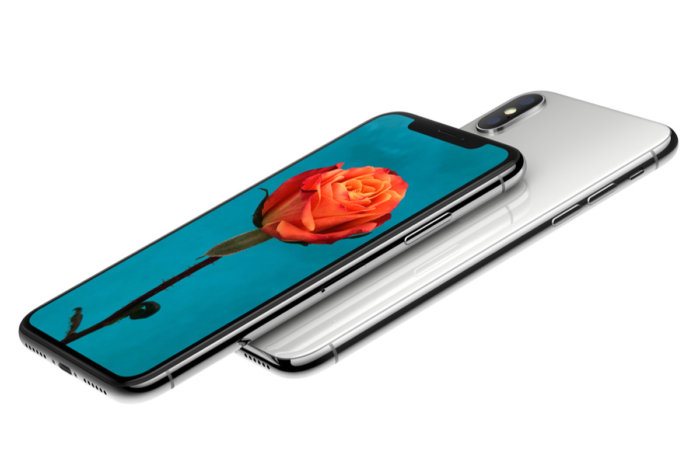
So that $1,000+ sticker shock didn’t put you off from buying the phone that Apple calls “the future,” did it? We don’t blame you—we bought the iPhone X, too. I know you want to dive right in the moment you get the box in your hands, but slow your roll! We have a little setup advice you’re going to want to pay attention to. Sure, it seems like a drag right now, but this stuff is going to save you time and frustration later.
1. Back up and restore
That’s right, you’re going to want to back up your old iPhone after you have your new iPhone X in hand, so the backup is as up-to-date as it can possibly be. You can back up via iCloud or iTunes:
For an iTunes backup: Connect your old iPhone to your Mac, launch iTunes, select your iPhone by clicking the little phone icon in the toolbar, and under Backups, choose This Computer. Checking Encrypt local backup is a good idea, so your account passwords and Health data gets backed up too—just choose a password you won’t forget. Click the button to Back up now.
advertisement
When the backup is done, connect your new iPhone X, then tell iTunes you want to restore from the backup you just made. Or, skip down to #2 below and use Quick Start. Later, you can switch back to iCloud backups if you prefer, in Settings > iCloud > Backup. But it never hurts to run a backup on your own Mac every now and then.
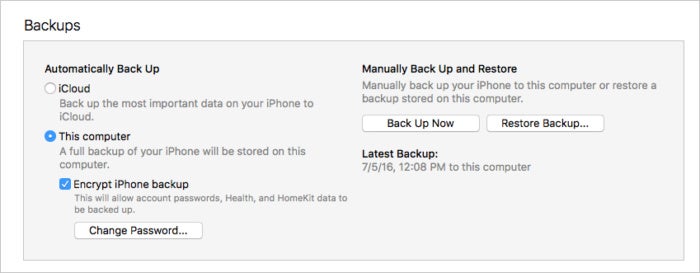 SUSIE OCHS/IDG
SUSIE OCHS/IDGFor an iCloud backup: No need to connect your iPhone to your Mac. Just launch Settings and tap on your Apple ID profile listing at the top, then go to iCloud > iCloud Backup and select Back up now. When setting up your new iPhone X, you can restore your iPhone from this backup once you’ve logged into your new device with your Apple ID.
If you happen to be coming from an Android phone (hey, welcome to the garden!), there’s a Move from iOS Android app that can assist you with setting up your Google account data in Mail, Calendars, and Contacts, moving your camera roll over, even transferring your Chrome bookmarks to Safari.
advertisement
2. Update your old iPhone and use Quick Start
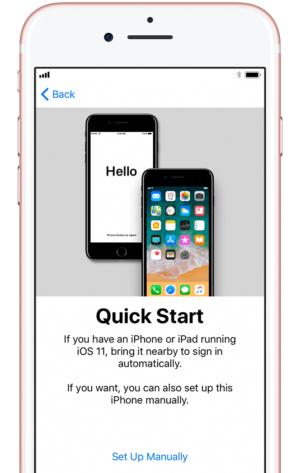 APPLE
APPLEiOS 11 introduces a really great new feature called Quick Start. It’s sort of like magic. You just hold your new phone next to your old phone, and a little card pops up asking if you want to transfer all your stuff to the new device. You’ll then point your old phone’s camera at your new phone (which displays a cloud of little dots) and enter your old phone’s 6-digit passcode.
You’ll go through the rest of the setup process, like enabling Face ID, and then your phone will be ready to go, set up just like your old iPhone. It’ll even prompt you to update your old iPhone’s backup if it hasn’t been backed up in awhile.
Setting up your phone this way transfers over most of your settings, the arrangement of your home screen, and more. It’s a huge time saver. But it requires iOS 11, so if you haven’t updated your old phone to iOS 11 for some reason, you might want to do that ASAP. You don’t want to have to wait through a big update process once you have your iPhone X in hand.
advertisement
After setting up your phone this way, you’ll want to give it a few minutes to re-download all your apps. Initially, your phone will show placeholders for your apps, all arranged and stuffed into folders exactly as on your old iPhone. But every time you download an app from the App Store, your phone actually grabs a unique version specifically optimized for that iPhone model. So your new phone has to download the apps again, but your user data and settings get transferred over.
As fast and easy as this is, we still recommend backing up your phone as described in #1 above. If anything goes really wrong during your setup process, you’ll be glad you did!
3. Set up Face ID and Apple Pay
Yes, you should use Face ID for maximum security—it’s the quickest way to unlock your iPhone X, and will let you set a more complicated passcode, since you don’t have to type it in every time. Setting up Face ID is much faster than Touch ID, too—the setup screen will promt you and ask you to slowly look around in a circle a couple times. It’s a lot quicker than tapping the home button dozens of times to register a fingerprint.
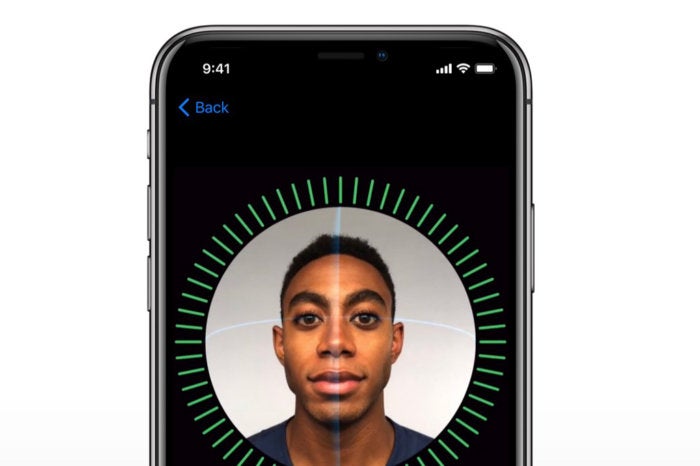 APPLE
APPLEWorried about your privacy with Face ID? Don’t be. No photos of your face nor any other biometric data ever leave your phone—Apple doesn’t get any of that. And it isn’t accessible by other apps, just as other apps weren’t able to access your fingerprints with Touch ID. You can read all about it in our Face ID FAQ.
Since you need to have Face ID enabled in order to use Apple Pay, this would be a good time to jump into Apple’s Wallet app to set that up. If you’re new to Apple Pay, just follow the instructions within Wallet to add a credit card or two. If you already had Apple Pay on your old iPhone, you’ll notice that your credit cards have disappeared on your new iPhone. Why? For your security, of course. Your Wallet history will still be there, but you’ll have to re-enter any payment cards you’d like to use with Apple Pay. (For more on Apple Pay, check out our complete guide.)
4. Update your apps
Great, now you should be on your home screen at last. Hit up the App Store first—you’ll want the latest versions of all of your apps in order to take advantage of all the new abilities Apple has given developers in iOS 11. If you’ve used Quick Setup, most of your apps should be up to date already, so this will be, er, quick.
While you’re there, check out the App Store’s new iOS 11 redesign. You’ll find collections of cool apps curated in magazine-style articles, interviews with up and coming app developers, game trailers, and more goodies over in the Today section. This changes daily, so you can come back tomorrow to see what else is new.
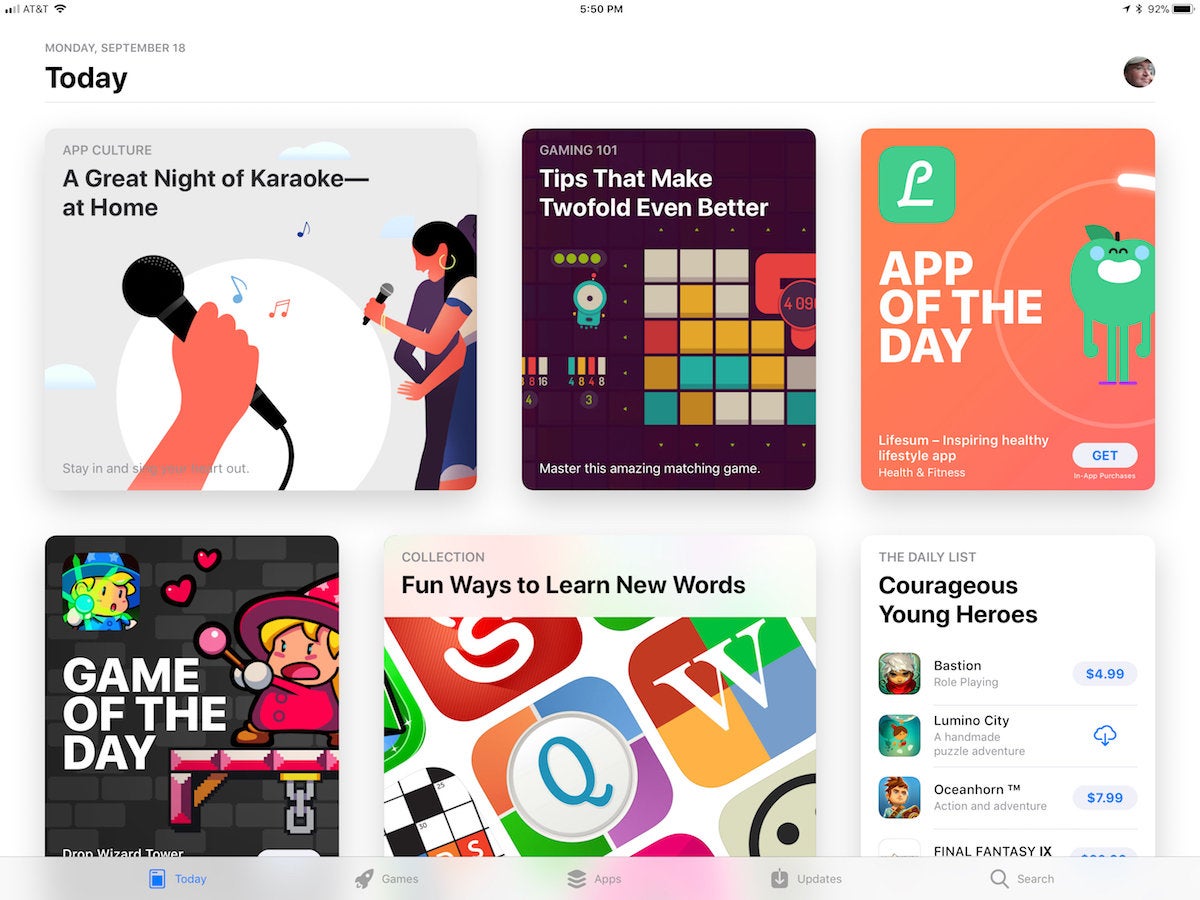 APPLE
APPLEDon’t forget you can have your apps auto-update by flipping the Updates switch in Settings > iTunes & App Stores. Or, you can manually update your apps and just check out the “What’s New” release notes to see what changed.
5. Pair your Apple Watch
If you use an Apple Watch (or maybe you just bought a brand new Apple Watch Series 3 to go with your future-phone) you’ll need to pair it to your new iPhone to keep the Activity data flowing to your Health database, and keep your new phone’s notifications flowing to your watch. First you have to unpair your watch from your old iPhone, either in the Apple Watch app on your old iPhone (tap your watch, then the “i” icon, then Unpair Apple Watch, then enter your iCloud password when prompted), or on the watch itself (Settings > General > Reset).
Then, launch the Apple Watch app on your new iPhone X, which will walk you through the pairing process including setting a passcode, unlocking behavior, and Apple Pay.
If your Apple Watch isn’t already running WatchOS 4, you’ll want to update it. Read more about watchOS 4 here. To upgrade, your Apple Watch needs to be connected to its charger, in range of your iPhone, and at least 50 percent charged. Then look for the Software Update option in the Apple Watch app. Upgrade your watch all the way to WatchOS 4.1, which adds awesome new music features for Series 3 watches and important security updates for everyone.
6. Learn the new gestures and commands
As you may have noticed, your iPhone X has no home button. Where the Home button used to be, you now have an extra half-inch or so of glorious OLED display!
So how do you do all that stuff you used to use the home button for? How does the app switching work? Or taking a screenshot?
Here are a few basic commands you’ll need to re-learn now that your iPhone is “home free.”
Return Home: Just swipe up from the bottom of the screen. Easy!
Jump between apps: Swipe left or right along the bottom edge of the phone to jump back and forth between apps. You can sort of “flick” from the bottom corners, moving your finger up and over, to “bounce” between the apps, or just slide directly side-to-side along the bottom edge.
App switcher: Swipe up from the bottom edge and pause for a second with your finger still on the display. App cards will quickly pop up, and you can lift your finger off and swipe around through them.
Close an app: If you need to kill an app from the app switcher, you do it a little differently. On other iPhones, you swipe up on the app card. On the iPhone X, you press and hold on the cards until red (-) symbols appear in the corners. Tap those to close the apps.
Take a screenshot: Simply press the side button and the volume up button at the same time.
There are lots of other new commands and gestures to learn. You’re in luck: We have a guide for that!
7. Try out Portrait Lighting
The iPhone 8 and X support a brand new camera technology called Portrait Lighting. It’s in beta, but you can still give it a shot (get it?). Just launch the Camera app and select Portrait from your camera modes at the bottom of the screen, and then swipe through the different lighting options at the bottom.
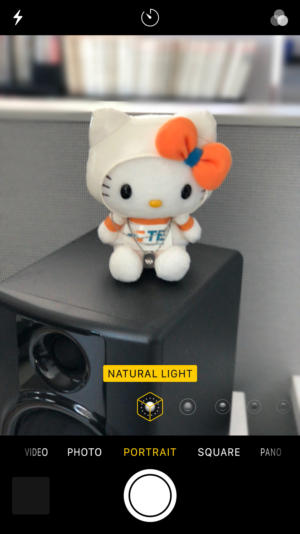 LEAH YAMSHON/IDG
LEAH YAMSHON/IDGOn the iPhone 8, portrait mode (including Portrait Lighting) is only available on the back cameras. But on the iPhone X, the front-facing selfie camera can use it, too!
The iPhone X has most of the same camera improvements as the iPhone 8 Plus—better low-light performance, more accurate color, and up to 4K 60fps video. But the iPhone X has optical image stabilization (OIS) on both the regular and the telephoto rear cameras.
8. Customize your Control Center
Control Center is one of the biggest changes in iOS 11. Instead of spreading your utilities out over three sliding pages, Apple condensed them into one screen with a uniform-looking set of icons. On the iPhone X, you access Control Center by swiping down from the top of the screen, to the right of the sensor notch. Apple’s default Control Center utilities include your camera, flashlight, calculator, and alarm clock; you’ll also find two sliding controls for your volume and screen brightness, plus toggles for rotation screen lock, Do Not Disturb, screen mirroring, and all of your wireless controls (like Bluetooth, Wi-Fi, and Airplane Mode). This is also where you’ll find your iPhone X’s remaining battery life percentage, since it can’t fit on the screen anymore (thanks, Face ID notch).
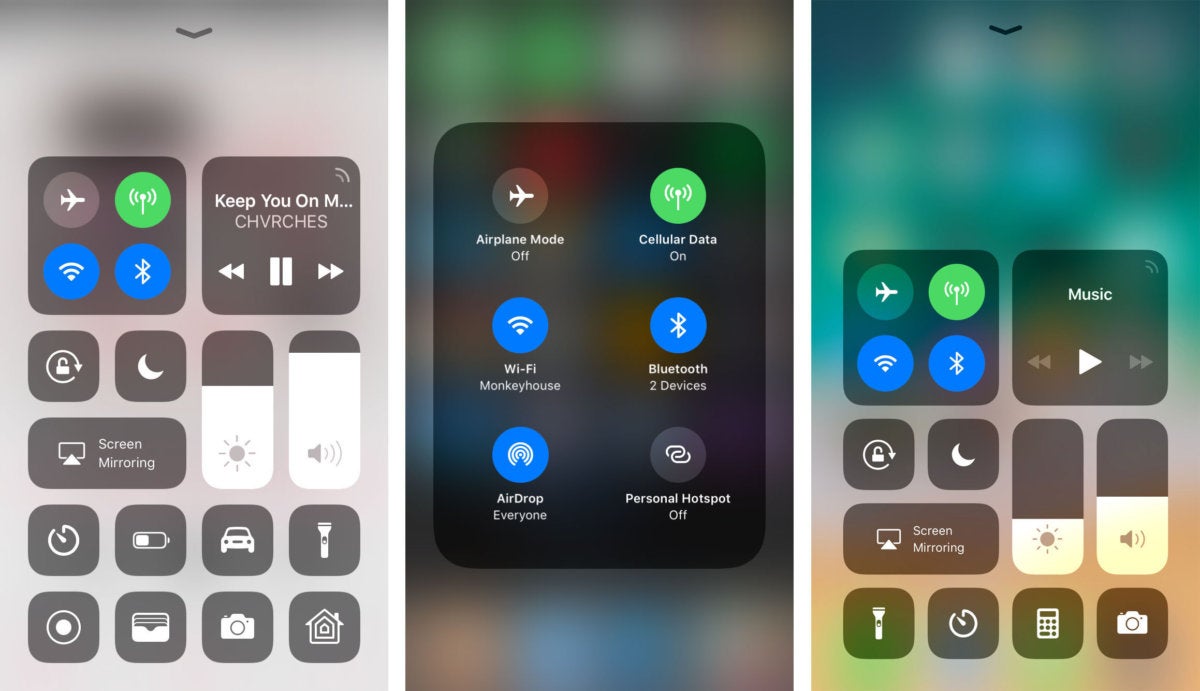 JASON SNELL
JASON SNELLOne of the best parts about iOS 10’s Control Center was the full page of controls just for audio playback, like when you’re listening to a podcast or streaming from Apple Music. In iOS 11, your audio controls are condensed into a small box featuring just a play/pause button and some skip controls. However, if you 3D Touch on the audio control box, it will expand and reveal a full suite of options for better control.
In fact, several of your Control Center utilities have hidden 3D Touch features—just long-press on any control to expand it. A light tap will turn that feature on or off, but a longer 3D Touch gesture will expand it some more.
There are a boatload of other features you can add to your Control Center panel, too—head on over to Settings > Control Center > Customize Controls, and add any feature that sounds interesting. Looking for something new? Check out Do Not Disturb While Driving, a feature that automatically enables Do Not Disturb once your iPhone detects that you’re in a moving vehicle, and Screen Recording, which lets you record what’s on your iPhone’s screen and then share it.
For more on what Control Center can do, check out our deep dive.
9. Charge it up, quick!
There’s a reason your new iPhone X has that shiny glass back, and that’s not because it’s a throwback to the iPhone 4. No, that glass back is for wireless charging support. To use this feature, you’ll need a compatible wireless charging pad that utilizes the Qi standard (Apple sells two—one from Belkin and one from Mophie—but we’ve tried others that work fine too). If you have one of those laying around, all you have to do is set your iPhone onto the pad and watch it start to power up. Say goodbye to the jumble of Lightning cables on your bedside table!
You can learn more about wireless charging on the iPhone X by reading our guide.
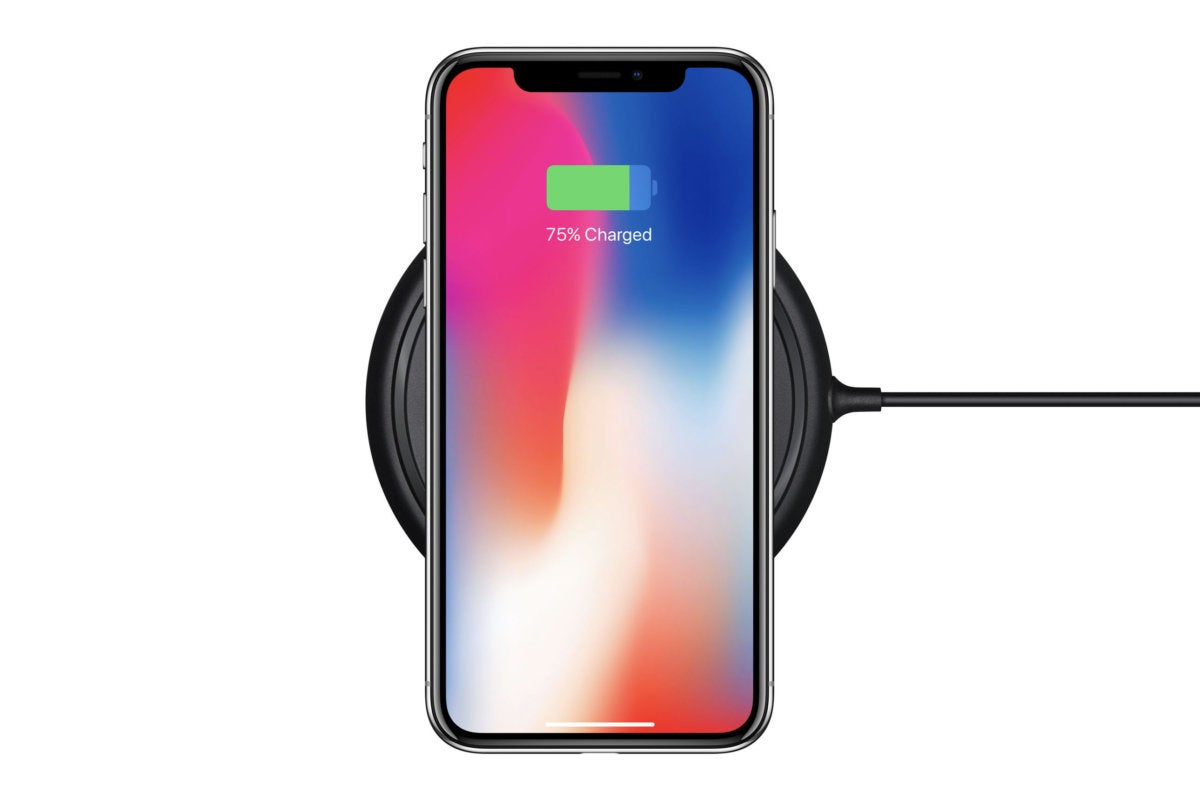 APPLE
APPLEOf course, you can charge your iPhone X via Lightning if you want to. In fact, this is still the fastest way to charge your phone, provided you use the right adapter and cable.
The iPhone 8 and X support fast charging using the USB-C Power Delivery (USB-PD) standard. You can use Apple’s own 29W USB-C power adapter, or the USB-C power adapter for a modern Macbook Pro. But third-party USB-C power adapters should work as well, as long as they support the USB-PD standard. You’ll need to buy a lightning-to-USB-C cable and a new adapter, because you’ll only find that same old slow 5W adapter and a USB-A lightning cable inside your iPhone X box.
10. Send Animoji to your friends
I know it’s silly, but the best way to brag about your new Future Phone is to send someone an iMessage that shows the Poo Emoji perfectly lip-synced and following your facial expressions as you sing “Bohemian Rhapsody.” They will be so jealous.
Animoji are found in Messages, as an iMessage app at the bottom of the screen.
 APPLE
APPLE